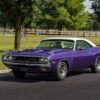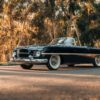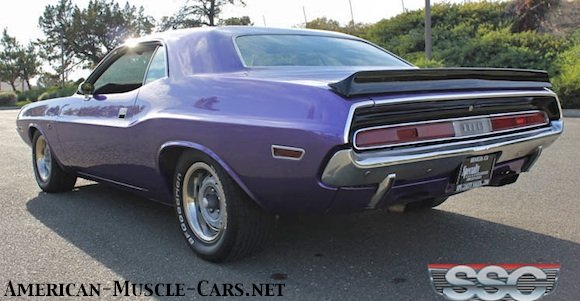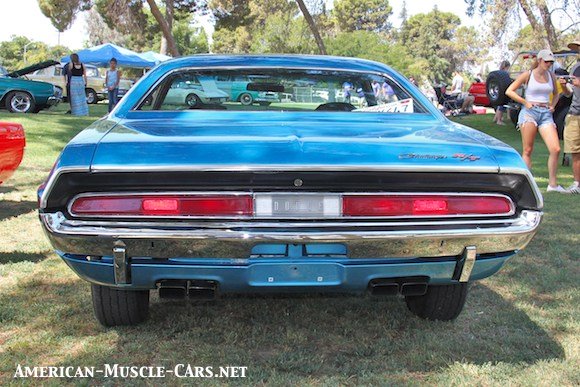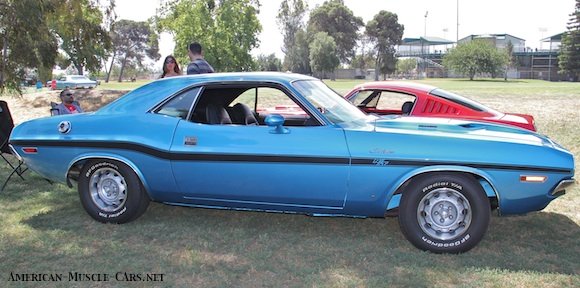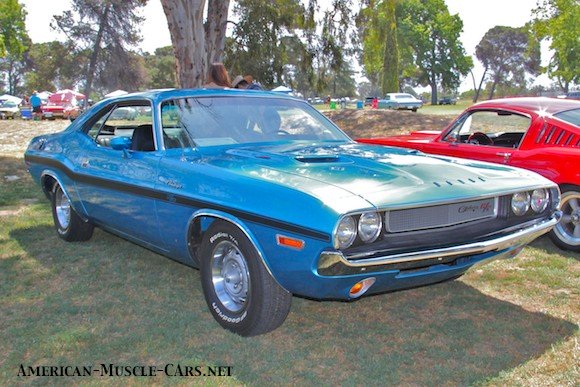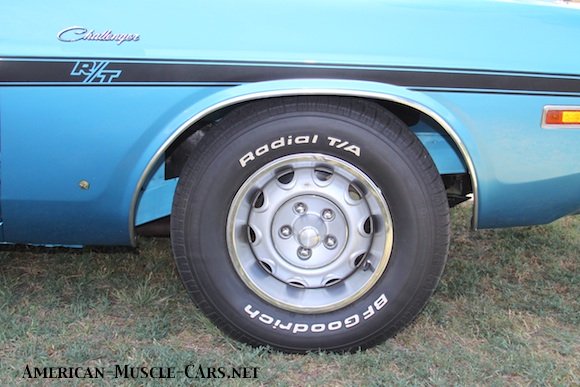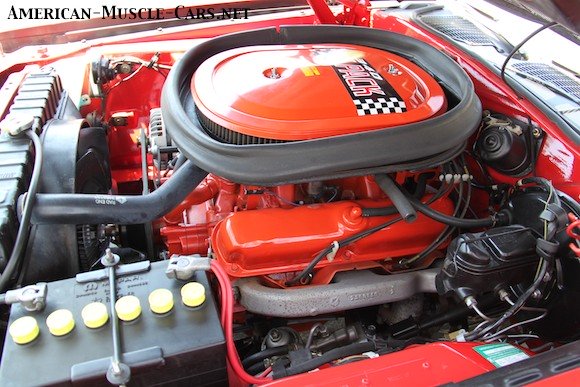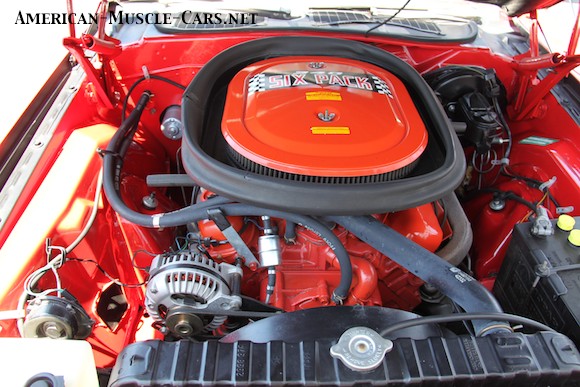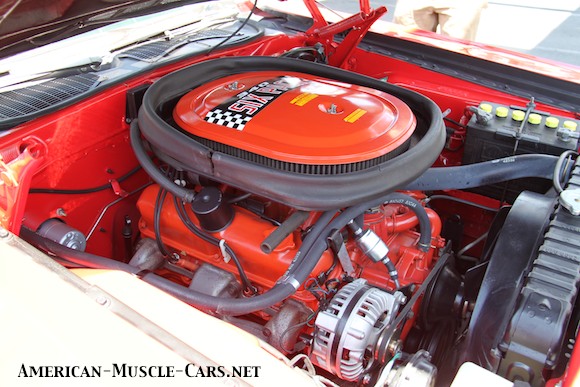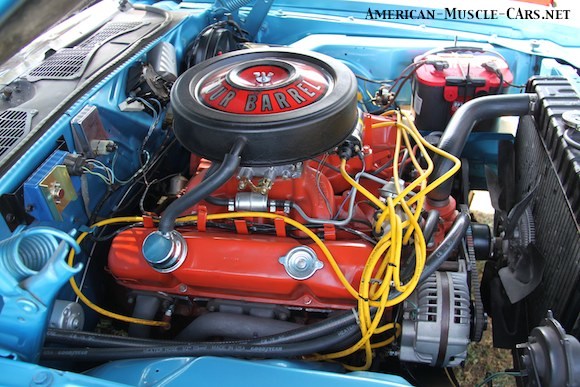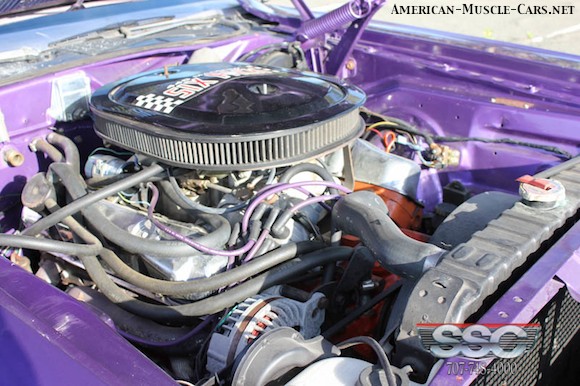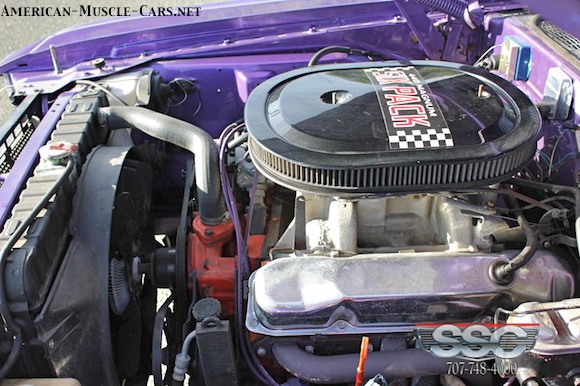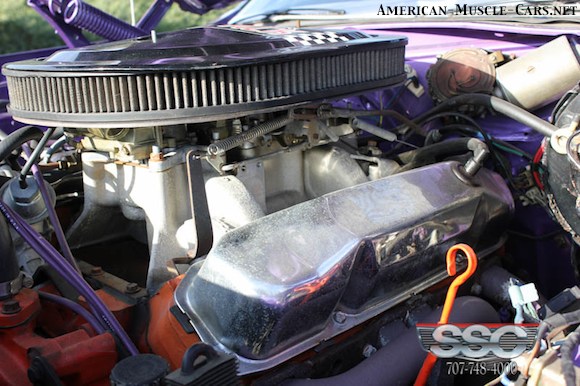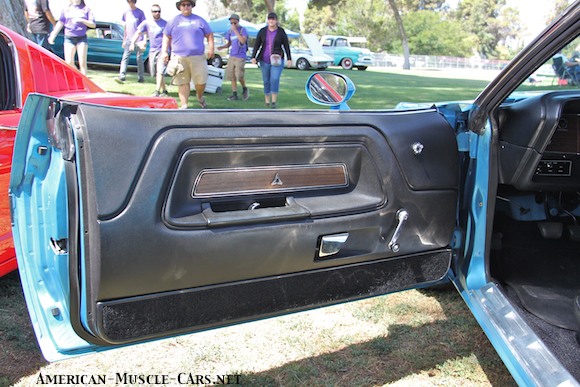1970 Dodge Challenger

1970 DODGE CHALLENGER CHANGES EVERYTHING
Up until now, Dodge (and Plymouth for that matter) had precious little to offer young, credit-approved buyers who were cross-shopping Mustangs, Camaros and Firebirds. The Charger wasn’t a true “Pony Car”, it was too big. It made a great muscle car though, appealing to the same buyers who might consider a Chevelle SS or a GTO. Plymouth’s Barracuda wasn’t doing much better. Chrysler launched its E-body twins, the Dodge Challenger and the slightly smaller Plymouth Barracuda in the fall of ’69 as 1970 models. There was no doubt, these were true Pony Cars, in their own unique way, and a real threat to “Brand X and Y”.
ABOVE & BELOW: One of the most popular Mopar colors, back then and now, was “Plum Crazy”, this wild shade of purple. It was just one of psychedelic hues in Chrysler’s paint palette at the time.
1970 DODGE CHALLENGER LOADED WITH OPTIONS
Chrysler did something that no one else in the muscle car business had been willing to do: offer its entire inventory of engines, large and small. From the lowly 225 Slant Six to the ground-shaking 426 Hemi, you could get them all in the new Dodge Challenger and Plymouth Barracuda. That combined with an astounding array of options and option packages made the E-body twins among the most versatile Pony Cars of the era. In fact, it was so versatile, and big that it blurred the lines between Pony Car and Muscle Car as few others did. 1970 was the only year for the Challenger T/A package with the 340 Six-Pack engine, a car meant to compete in SCCA racing. Or, for street cred, you could get a Challenger R/T with a range of big blocks or the might Hemi. The Challenger SE or Special Edition was a trim package, upgrading the interior & trim, and could be applied to other models. The ’70 Challenger was built in 2 body styles, Coupe and Convertible.
1970 Dodge Challenger ENGINES
1970 DODGE CHALLENGER ENGINE OPTIONS
Base Challengers came standard with the 225ci slant-six. V8 power began with the optional 2-barrel 318 small block V8 making 230hp. Next up was the 340 small block V8, and a range of 383 big blocks, a 2-barrel making 290hp and a 4-barrel making 325hp. The 440 Magnum big block V8 was good for 375hp with single 4-barrel. But when coupled with three 2-barrel carburetors, it became the 440 Six-Pack and made 390hp. Then on top of the heap was “The Elephant Motor”, the almighty 426 Hemi, with two 4-barrels and 425hp (grossly understated). Then in the 1970-only Challenger T/A, the only engine available was a 340 Six-Pack backed up by a 4-speed, heavy duty limited-slip differential, and a host of performance equipment.
340 SIX-PACK
383 MAGNUM
440 SIX-PACK
426 HEMI w/SHAKER HOOD
1970 Dodge Challenger INTERIORS
1970 Dodge Challenger SPECIFICATIONS
| Body style
Model # / Body style # Price when new Challenger R/T Challenger T/A Production Challenger, 6 cyl Challenger, V8 Challenger R/T, V8 w/383 V8 w/440 V8 w/440 Six-Pack w/426 Hemi Challenger T/A Wheelbase Length Width Track, front Track, rear Weight Challenger Challenger R/T Challenger T/A ENGINE OPTIONS G-code H-code J-code L-code L-code N-code (R/T-only) R-code (R/T-only) U-code (R/T-only) V-code (R/T-only) |
2-door Hardtop
JH / 23 (V8) $2,953 $3,266 $4,056 46,880 9,929 36,951 9,067 2,802 1,640 287 2,399 110.0 in 191.3 in 76.3 in 59.7 in 61.6 in (V8) 3,118 lbs 3,402 lbs 3,650 lbs 318ci OHV V8, 1X2bbl 340ci OHV V8, 1X4bbl 340ci OHV V8, 3X2bbl 383ci OHV V8, 1X2bbl 383ci OHV V8, 1X4bbl 383ci OHV V8, 1X4bbl 426ci HEMI V8, 2X4bbl 440ci OHV V8, 1X4bbl 440ci OHV V8, 3X2bbl |
2-dr Sports Hardtop
JH / 27 (v8) $3,185 $3,498 6,223 350 5,873 2,522 875 296 60 (V8) 3,148 lbs 3,437 lbs 230 hp / 320 lb/ft 275 hp / 340 lb/ft 290 hp / 345 lb/ft 275 hp / 390 lb/ft 330 hp / 425 lb/ft 300 hp / 400 lb/ft 425 hp / 490 lb/ft 375 hp / 480 lb/ft 390 hp / 480 lb/ft |
2-door Convertible
JH / 27 (V8) $3,198 $3,535 2,921 378 2,543 692 163 99 9 (V8) 3,198 lbs 3,467 lbs |


